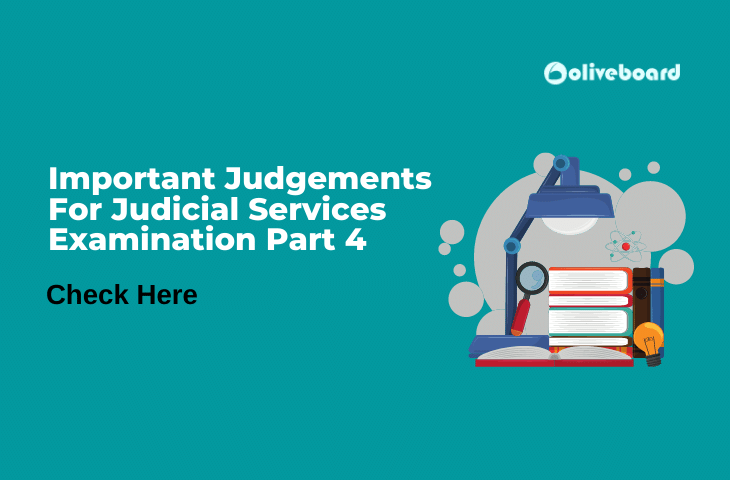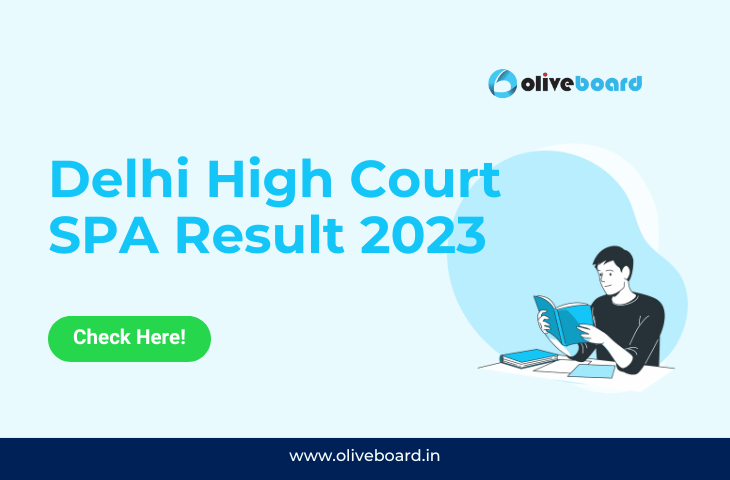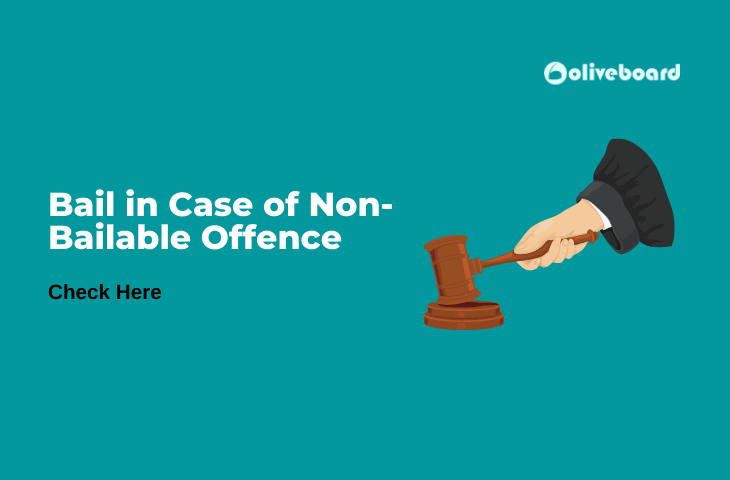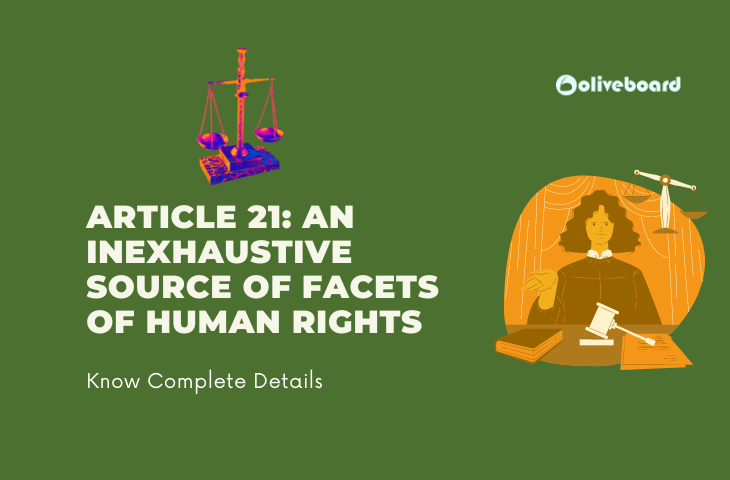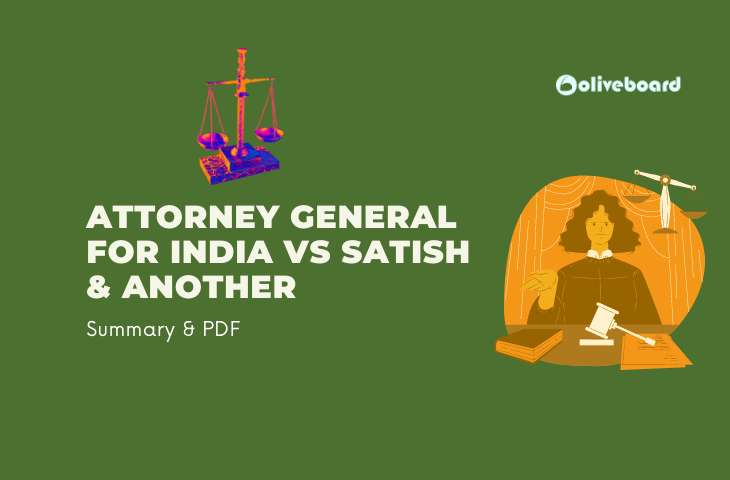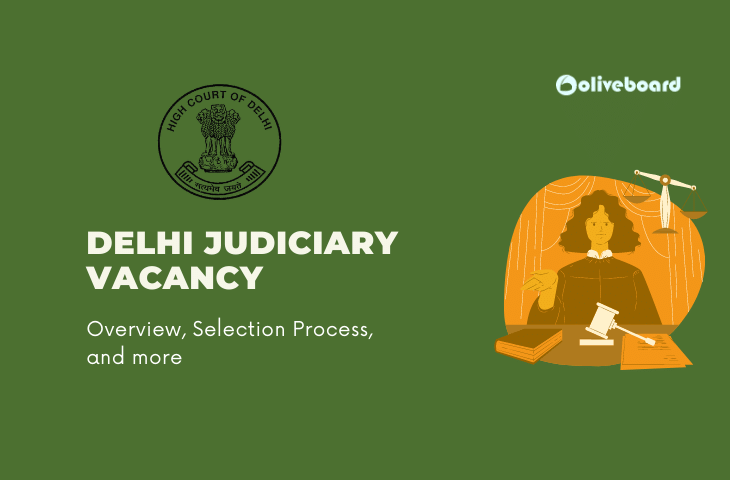Important Judgements For Judicial Services Examination – Knowledge about landmark as well as recent judgments is very important for a judicial aspirant. Questions are asked from these not only in preliminary but also in mains examination and sometimes in an interview as well. In addition to this, it will surely fetch you some extra marks and keep you inches ahead of your other competitors if mentioned when you get a chance to express it on a piece of paper or vocally in front of the panel. The important points for the preliminary exam are the legal provision involved, the issue raised, and the judgment pronounced. For mains examination, the ‘Ratio Decendi’ has to be analyzed carefully along with the legal provisions.
Kick Start Your Judicial Services Preparations Now
The landmark cases and the recent ones have to be kept at your fingertips by you to attempt all questions and to share some additional information with the evaluator. In this article, we present a series of crisp summaries of such judgments from different legal arenas to help you in your preparation. It is practically known fact for you if you have already set the first step in preparation that researching for the important & relevant judgment from an exam point of view takes a lot of time, and reading whole cases will not be possible for you especially when you are not left with lots of time and the syllabus which need to be covered is limitless. This piece of writing contains five such judgments in the series which will give you a grip over the concept and add some value to your training.
Important Judgements For Judicial Services Examination – Part 4
People’s Union for Civil Liberties vs. Union of India & Anr. (2013) 10 SCC 1 – (NOTA Case)
The concepts of ‘Right to Vote’ and ‘Equal Voting Rights’ are intrinsic vis-a-vis the existence and proper functioning of any Democracy. A concomitant of this right is the right to enjoy secrecy and privacy whilst casting the vote in favor of a candidate. A logical extension of the ‘right to vote’ is the right not to cast a vote in favor of anyone if the voter so desires, also known as negative voting. An issue that regularly came up was whether this right not to vote enjoyed the same status as the conventional right to vote and if so, would it then be entitled to the same statutory treatment.
The facts matrix of the present case pertained to the validity of Rules 41(2) & (3) and 49-O of the Conduct of Election Rules, 1961, which gave statutory recognition to negative voting. Originally, the rules required disclosure of reasons by the person availing this right to the Returning Officer who was required to keep a record of the reasons. The purport of these rules was seen to be in conflict with the guarantee of free and fair voting vide Section 128 of the Representation of the People Act, 1951 and particularly Rules 39 and 49-M of the 1961 rules, insofar as they guaranteed secrecy whilst casting of votes. This was subject to challenge via a writ petition under Article 32.
Kick Start Your Judicial Services Preparations Now
Petitioners contended that the right not to vote was an inherent part of an individual’s Freedom of Expression under Article 19(1)(a) and Rules 41(2) & (3) and 49-O of the Conduct of Election Rules 1961, insofar as they compromised the right to secret balloting by requiring mandatory disclosure to the Returning Officer, were violative of both Articles 19(1)(a) and 21. Thus, they pleaded with the Court to issue directions to the Election Commission to ensure the protection of voter secrecy as well as non-disclosure of their preference. To these contentions, the respondents retorted by saying that the Right to vote was merely a statutory right instead of being a fundamental or constitutional right and consequently was not amenable to challenge under Article 32. Further, the right to secrecy was confined to instances where a vote in favor of a candidate was actually cast and could not be extended to negative voting.
The Supreme Court beautifully drew a distinction between ‘Right to Vote’ and ‘Freedom of Voting’, wherein while the former is in the nature of a statutory right, the latter constitutes entails the decision of a voter as regards voting or not voting and to this end, tantamounts to an intrinsic facet of the Freedom of Expression. This differentiation was employed to establish the amenability of the matter to writ jurisdiction. Further, the court also noted that artificially creating a distinction between instances of positive and negative voting, when both are a form of expression, would be violative of Article 14. In sum, the court emphasized the indispensability of free and fair elections for our constitution, and maintaining voter secrecy was an essential means of preserving the same. Finally, the Election Commission was directed to incorporate the option of NOTA (none of the above) in Electronic Voting Machines.
Shayara Bano vs Union of India (Triple Talaq case) AIR 2017 9 SCC 1 (SC)
The phenomenon of “Talaq-e-Biddat”, popularly known as Triple-Talaq is a traditional Islamic manner of carrying out divorce between the husband and wife, where a Muslim man is permitted to effectuate instant and irrevocable divorce to his wife, merely by reciting the word ‘talaq’ three times in continuity. This can be done either spoken, written, or via electronic means. This practice has widely been regarded as immoral and regressive insofar as it bestows upon the husband arbitrary authority to bring the marriage based on his whims, which is violative of the wife’s constitutional rights. In contrast, numerous Muslim religious groups have argued how the practice is an essential expression of their Islamic identity and judicial interference is unwarranted. This widespread debate underwent a final showdown in the Supreme Court in 2017, where the court ended up invalidating the practice.
The immediate facts of the case pertained to one Shayara Bano, whose 15-year marriage came to an abrupt ending at the hands of the husband when he divorced her via triple talaq. Aggrieved, she brought an appeal to the Supreme Court seeking a declaration of the practices of talaq-e-biddat, polygamy, and nikah-halala as unconstitutional insofar as they were violative of the fundamental rights of a woman envisioned under Articles 14, 15, 21 and 25. Nikah-halala refers to the practice wherein a divorced woman intending to remarry her husband would have to undergo a separate marriage and divorce in order to be eligible for such remarriage. The respondents contended that court interference was not permissible in these issues as they formed part of uncodified Muslim law and to that extent, were outside the realm of judicial scrutiny, in addition to the practices being essential to the Islamic religion.
A Constitutional Bench of the court framed the following issues for deliberation:
- i) Does the practice of carrying out instantaneous talaq via Talaq-e-biddat an essential practice of Islam.
- ii) Does the practice of Triple Talaq infringe any fundamental rights.
By a close 3:2 majority, the court declared talaq-e-biddat and its practice by Muslim men as unconstitutional. The court posited that the practice of Triple Talaq was inherently arbitrary in nature and by bestowing upon the husband the capricious power to abruptly bring a marriage to an end, it entailed a negation of equality and equal status of the wife, thus violating Article 14. Additionally, the court cited Article 13(1) and its provision regarding the invalidity of laws in force before the commencement of the constitution which are contrary to fundamental rights as to say that Muslim Personal Law (Shariat) Application Act 1937, insofar as it recognized triple talaq, was void. Further, while carrying out the assessment of whether talaq-e-biddat tantamounts to an essential practice in the Islamic religion, the court employed the ‘essentiality test’ which is used as a parameter in such issues. Particularly, Justice Nariman cited the Commissioner of Police vs Acharya Jagdishwarananda Avadhuta case, which inter alia had held that for a practice to be considered essential to a religion, it must be so inextricable to it so as to be the case that in absence of such practice, the fundamental nature of the religion would change. Based on this, Justice Nariman posited that talaq-e-biddat could not be regarded as being an essential ingredient in the practice of Islam.
Kick Start Your Judicial Services Preparations Now
Justice K.S. Puttaswamy v Union of India (Aadhar Judgment) (2019) 1 SCC 1
The Aadhar Card is something that in the present times is recognized by individuals from all walks of life. Its inception as an idea can be traced back to 2011, wherein it was intended to serve as an identity document with a 12 digit unique code. The Unique Identification Authority of India (UIDAI) was formulated to govern the issuance. It was subsequently made mandatory for availing several government welfare schemes. Although prima facie promising, the scheme has been marred with controversies ever since its inception. Particularly, the application procedure which includes submission of biometric data, fingerprint, and retina details along with other personal details has been impugned as posing potential privacy concerns.
Its constitutionality was subject to challenge in K.S. Puttaswamy, wherein the petitioner primarily contended how the lack of adequate safeguards for ensuring privacy exposed personal data collected by UIDAI during authentication to possible abuse at the hands of private parties, in addition to the Government itself potentially using data for surveillance purposes. Further, the fundamental justification of Aadhar as a means to avail Government welfare schemes was itself arraigned, as according to the petitioner, access to such welfare schemes was a matter of right for citizens and could not be made contingent on showing Aadhar.
A constitutional bench of the Supreme Court primarily framed the following issues for deliberation:
- i) Whether the Aadhar scheme posed a tendency to engender a surveillance state?
- ii) Whether the scheme infringes upon the Right to Privacy?
iii) Whether enactment of the Aadhar Act as a Money Bill under Article 110 was constitutionally valid?
By a 4:1 majority, the court upheld the validity of the Aadhar Act, along with declaring its constitutional soundness on all other fronts. The court refuted the first issue pertaining to surveillance concerns, citing the manner of operation of the Aadhar Act. The court noted how only essential and minimal biometric and fingerprint credentials were collected by the UIDAI. Further, external parties requesting such authentication of an individual would only be given a ‘Yes’ or ‘No’ response, instead of sharing the individual’s personal information. This would ensure that an individual’s personal details are not made public. Also, the scheme was to be additionally governed by an independent body viz the Security Review Committee. As regards the issue of privacy, the court cited the three-pronged test to check the validity of an action, wherein any impugned action should have i) legal backing; ii) should have a legitimate state aim, and iii) should have proportionality. The court cited the welfare-oriented nature of Aadhar and valid legislation to posit the fulfillment of the first two conditions. As regards the aspect of ‘proportionality’, the scheme satisfied this test insofar as it served to strike a balance between the fundamental right of food and shelter on the one hand and privacy on the other.
With respect to the third issue, the court posited the aspect of drawing the expenditure for welfare scheme benefits from the Consolidated Fund of India to say that it could legitimately be passed as a Money Bill under Article 110. On this point, the dissent of Chandrachud J is pertinent to note, inasmuch as he regarded the passage of the Aadhar Bill under Article 10 as intended to circumvent the scrutiny of the Rajya Sabha and thus a “fraud on the constitution”.
Kick Start Your Judicial Services Preparations Now
Vishaka vs State of Rajasthan (1997) 6 SCC 241
While in 2021, spotting women employees in professional spheres is a normal sight, this was not always the case. Such tremendous progress has not occurred overnight and instead has been a gradual process. A lot of factors had to be legislated in order to arrive at the current phase where women can take a call with respect to employment-based exclusively on mutual professional compatibility, instead of having to take into account additional factors. One such pressing issue has been that of Sexual Harassment at the workplace and ensuring a safe space for working. The landmark case of Vishaka vs State of Rajasthan constitutes a watershed moment in this regard. This case vividly brought to public light the sinister aspects that pervaded the workplace for women in the 1990’s and for the pressing need for judicial interference.
The immediate facts pertained to one Bhanwari Devi, who was working in tandem with a State Government-initiated project aimed to curb the evil of Child Marriage. During one such stint to dissuade a family from marrying off their minor daughter, she was gang-raped by the vengeful accused family. Subsequently, on filing a case with the local police, she was subject to incessant harassment at the hands of the corrupt and pliant police to retract her FIR. Although owing to powerful political connections, the accused were acquitted in the trial court, Bhanwari Devi’s cause gained traction with women’s rights’ groups, one of them being Vishaka, and a writ petition under Article 32 was filed.
The petitioners primarily contended that sexual harassment suffered by women at the workplace was a flagrant violation of their fundamental rights guaranteed under Articles 14, 15, 19(1)(g) and 21 of the Constitution. Further, owing to a lack of a legislative framework to govern and penalize such instances, an offending employer would end up escaping scot-free, something which could only be remedied if a principal law were put in place.
A three-judge bench of the Supreme Court framed the following issues for discussion –
- i) Is sexual harassment at the workplace violative of Articles 14, 15, and 21?
- ii) Is there a need for mandatory guidelines to be delineated to govern sexual harassment at the workplace?
The Supreme Court declared the phenomenon of harassment at the workplace suffered by women as a clear violation of the fundamental rights available to them under Articles 14, 15, and 21. The primary reason for this was the fact that Gender Equality, being entrenched within the ideal of the aforesaid fundamental rights, was essential to be preserved. Ergo, sexual harassment at the workplace, by striking at the root of gender equality, was antithetical to the proper enjoyment of the rights guaranteed by Articles 14, 15, and 21. Furthermore, such a phenomenon had the tendency to infringe Article 19(1)(g) and its guarantee of freedom of profession, owing to the impediments it created for working women. The court also cited Part IV of the Constitution, particularly Article 42 (Provision for Just and humane conditions of work and maternity relief) and Article 51A.
Most importantly, the court formulated the famous ‘Vishaka Guidelines’ which were a set of norms to be observed at both private and public workplaces. These guidelines delineated explicit duties that needed to be complied with by an employer and subsequently formed the bedrock for The Sexual Harassment of Women at Workplace (Prevention, Prohibition and Redressal) Act, 2013.
Kick Start Your Judicial Services Preparations Now
Shreya Singhal vs Union of India AIR 2015 SC 1523
The Freedom of Speech and Expression guaranteed to an individual vide Article 19(1)(a) includes as an essential facet the freedom to express dissent or disagreement with something. With the advent and pervasiveness of the internet, newer avenues are available at the disposal of an individual to exercise such rights. Thus it becomes important to envision proper safeguards to ensure that these rights can be freely exercised without undue state-sponsored suppression. The immediate facts, in this case, pertained to two women who were subject to arrest for their scathing remarks expressing displeasure with a Mumbai wide bandh declared in the wake of the death of a political leader. These arrests were made under the draconian Section 66A of the Information Technology Act, 2000. The aforesaid section inter alia penalized individuals for sending ‘grossly offensive’ or ‘menacing’ messages via a digital platform. Owing to its nebulous wording and drastic purport, a writ petition was filed to declare this provision as being unconstitutional.
The Supreme Court assessed its constitutional validity from the touchstone of Article 19(1)(a) and its guarantee of free speech and expression. The court held that preserving the rights of an individual under the aforesaid article was of paramount importance and any restrictions to be imposed on such rights could only be permissible if they fall within the reasonable restrictions enumerated under Article 19(2), which was not the case presently, as the restrictions being imposed were outside the scope of Article 19(2). Further, the court also emphasized the vague nature of the terminology used in Section 66A and how owing to such vagueness, the penal provision posed the possibility for being interpreted by law enforcement authorities in a subjective and arbitrary manner to further their purposes. The court also highlighted in its judgment the innate disparity between ‘hate speech’ and ‘free speech’ and how any expression of dissent should not ideally be put under the ‘hate speech’ scanner, as this could have a chilling effect on the rights of individuals. Finding Section 66A to be violative in light of these aspects, the court declared it unconstitutional.
We hope this list of Important Judgements For Judicial Services Examination is helpful to you in all means.
- Delhi High Court SPA Result 2023 Out, Direct Link to Download
- Bail in Case of Non-Bailable Offence
- Important Judgements For Judicial Services Examination
- Article 21: Important Judicial Decisions On Different Dimensions Of Article 21
- Attorney General for India vs Satish & Another – Summary
- Delhi Judiciary Vacancy: Overview, Selection Process, and more

The most comprehensive online preparation portal for MBA, Banking and Government exams. Explore a range of mock tests and study material at www.oliveboard.in
